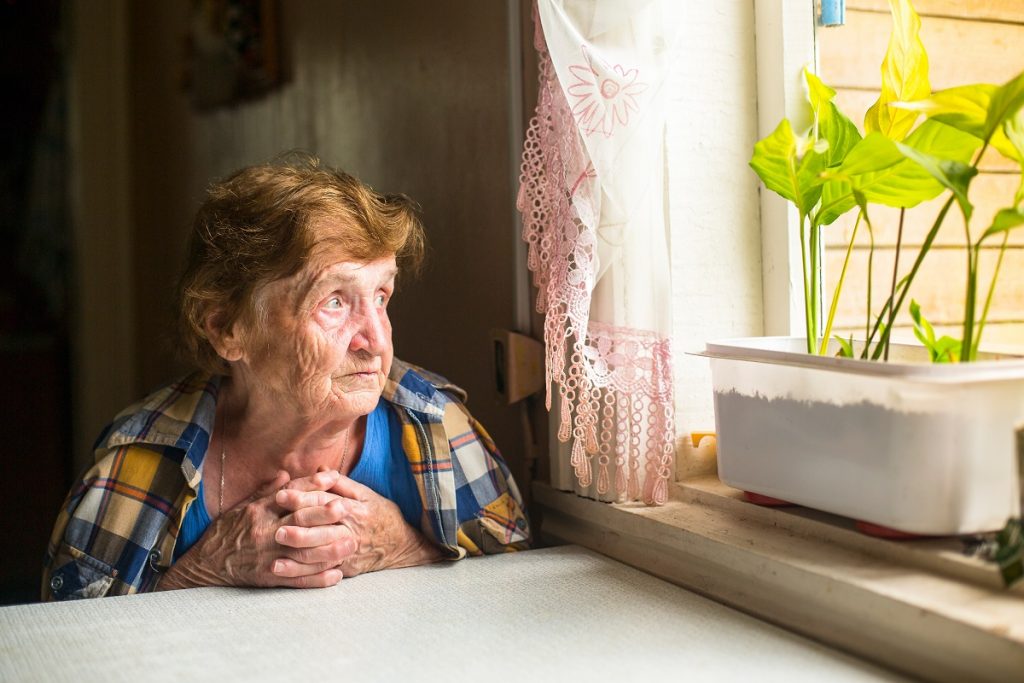It has been twenty years since Oregon’s physician-assisted suicide law took effect after a public referendum. Since then, four other states have legalized physician-assisted suicide.
Polls seem to show strong public support for physician-assisted suicide. They ask questions like this one from a 2017 Gallup poll: “When a person has a disease that cannot be cured and is living in severe pain, do you think doctors should or should not be allowed by law to assist the patient to commit suicide if the patient requests it?”
Unfortunately, most people have only a vague idea about what such laws actually say and do. Here are six things you must know before you decide whether to support or oppose physician-assisted suicide.
1. Pain or any other suffering is not a requirement for a person seeking assisted suicide; “a disease that cannot be cured” can include manageable conditions like diabetes as well as terminal illnesses like cancer.
Start your day with Public Discourse
Sign up and get our daily essays sent straight to your inbox.None of the US laws are restricted to patients experiencing pain, which can be addressed in ways that do not deliberately kill the patient. In 2016, for example, almost half of patients using assisted suicide in Oregon cited their reason for seeking death as “Burden on family, friends/caregivers” while just 35 percent cited “Inadequate pain control or concern about it.”
2. Medical professionals participating in physician-assisted suicide are immune from accountability and standards of due care.
“No person shall be subject to civil or criminal liability or professional disciplinary action for participating in good faith compliance with” Oregon’s law. Thus any licensed doctor (or other healthcare provider), with or without experience and regardless of his or her medical specialty, can write a lethal overdose prescription for a patient as long as he or she claims to be in “good faith compliance.” As a legal standard, this test is effectively meaningless, because it relies only on the physician’s word.
The physician is not required to be—and often is not—the patient’s primary care doctor. Many physicians do not want to be involved in this process, according to “Compassion & Choices,” an organization that promotes the legalization of physician-assisted suicide throughout the United States. When one doctor (or many) conclude that it would be irresponsible to give a lethal overdose to a patient, such organizations encourage patients to find a doctor with lower standards.
No other medical intervention has such immunity protection from lawsuits or criminal investigation. In addition, no other medical intervention is so devoid of standards for the clinical expertise or education required of the physician involved.
3. Physician-assisted suicide does not involve the stringent documentation and oversight required for other medical interventions.
In all jurisdictions where physician-assisted suicide is allowed, to prescribe a lethal overdose the doctor need only fill out the required state forms that include a consultation with a second physician who agrees. Neither doctor is required to have a professional relationship with the patient before the physician-assisted suicide request.
Documentation of physician-assisted suicides relies on doctors’ self-reporting. There is no requirement that the actual taking of the lethal overdose be witnessed by a medical professional or anyone else. This means that there is no safeguard against medical complications, coercion by family members, or other problems.
The Oregon law also specifies that, “Except as otherwise required by law, the information collected shall not be a public record and may not be made available for inspection by the public.” Only “an annual statistical report of information” is made public, after which the original forms are destroyed.
Unfortunately, the immunity protections and secrecy surrounding even the minimal self-reporting in state-level assisted-suicide laws eliminate the possibility of future potential lawsuits or prosecutions for abuse. They keep alive the myth that there are strong safeguards in the law that eliminate problems like coercion or elder abuse.
4. The cause of death must be falsified.
States with physician-assisted suicide laws require that the cause of death is reported as death from an underlying condition rather than the lethal overdose, supposedly to ensure the patient’s privacy. But this clearly violates the standards set for coroners and medical examiners by the Centers for Disease Control. Those standards require accuracy in determination of death because “The death certificate is the source for State and national mortality and is used to determine which medical conditions receive research and development funding, to set public health goals, and to measure health status at local, State, national, and international levels.”
Falsified death certificates also quietly function to smooth over any problems with life insurance policies that have suicide clauses denying death benefits if the insured commits suicide within two years of taking out a policy. And since doctors are only required to “recommend that the patient notify next of kin” about the plan for assisted suicide, the rest of the patient’s family may never know the real cause of death. This means that they are also deprived of the chance to reassure their loved ones of their support and willingness to help take care of them until their natural death.
5. Assisted suicide laws promote discrimination against suicidal people.
The usual standards for caring for a suicidal person include intensive management to prevent suicide attempts. These are changed in physician-assisted suicide: “If, in the opinion of the attending physician or the consulting physician, a patient may be suffering from a psychiatric or psychological disorder or depression causing impaired judgment, either physician shall refer the patient for counseling.” Only the evaluation of a patient’s competence, not the diagnosable mental disorders that afflict more than 90 percent of people who die by suicide, is required. It is shocking that only 3.8 percent of those seeking physician-assisted suicide in Oregon were referred for psychiatric evaluation in 2016. Patients with dementia and with clinical depression that had existed for years before they contracted a physical illness have died under the Oregon law.
6. Suicide is contagious.
A 2015 article in the Southern Medical Journal titled “How Does Legalization of Physician-Assisted Suicide Affect Rates of Suicide?” studied Oregon’s and Washington’s rates of non-assisted suicide after assisted suicide laws were passed. Despite claims that assisted suicide laws would reduce other suicides or only substitute for them, the authors reached the disturbing conclusion that “Rather, the introduction of PAS (physician assisted suicide) seemingly induces more self-inflicted deaths than it inhibits.”
This does not surprise me. In 2009 my thirty-year-old, physically healthy daughter Marie died by suicide. She killed herself using a technique she learned after visiting assisted suicide/suicide websites and reading Final Exit (1991) by Derek Humphry, founder of the Hemlock Society (an organization that merged with another group to form Compassion & Choices). The medical examiner called her suicide “textbook Final Exit.”
Adding to our family’s pain, at least two people close to Marie became suicidal not long after her suicide. Luckily, they were saved, but suicide contagion, better known as “copycat suicide,” is a well-documented phenomenon. Often media coverage or publicity around one death can encourage other vulnerable people to commit suicide.
According to the Centers for Disease Control and Prevention, suicide rates have been increasing since 2000 after decades of decline. Suicide is now the tenth leading cause of death in the United States, with more than 44,000 people dying by suicide every year. Suicide costs society over $56 billion a year in combined medical- and work-loss costs, not to mention the enormous toll suicide takes on family and friends. Oregon’s suicide rate is more than 40 percent higher than the national average.
Is the real healthcare crisis not enough physician-assisted suicide laws? Or is it the staggering and increasing number of people losing their battles with mental illness and committing suicide?
No matter what Compassion & Choices says, physician-assisted suicide is not a civil right or just one of an assortment of morally neutral end-of-life options. It’s time to stand up and fight to keep the medical profession from abandoning its most fundamental ethical principles.














